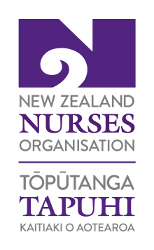 New Zealand Nurses Organisation media release, 14 January 2019
New Zealand Nurses Organisation media release, 14 January 2019
The New Zealand Nurses Organisation (NZNO) supports the New Zealand Resident Doctors Association (NZRDA) in its industrial dispute with District Health Boards (DHBs) and warns that unsafe working conditions imposed on resident medical officers (RMOs) would impact on the quality of health care in New Zealand.
NZNO Industrial Advisor Lesley Harry says DHBs are now insisting on reducing the terms and conditions agreed with RMOs in the 2016/17 multi-employer collective agreement (MECA). These reductions include less safe rostering, reductions to callout pay and RMOs being redeployed without their agreement.
“This is completely unacceptable when we are currently facing a serious shortage of RMOs and medical specialists across the board resulting in inadequate and unsafe staffing levels.
“Demand on hospital services continues to increase, which means we need to be forward thinking. We should be attracting and retaining trainee doctors and treating them with respect because better staffing levels are vital in sustaining health services.”
Lesley Harry said nurses can testify that what doctors are saying about short staffing and burnout is a fact, and that NZNO members in hospitals increasingly report situations where staffing levels and working hours mean patients are not receiving the standards of care they should expect.
“As health care professionals, doctors' and nurses’ first priority is meeting the needs of every patient coming through the hospital door. We don’t want to see our best and brightest unable to provide the quality of care they are trained for because they are exhausted or do not feel respected.”
She said it was imperative these issues were sorted quickly before the existing MECA expires in February.
“RMOs move around between employers as part of their work and if an acceptable agreement isn’t negotiated in time they could be vulnerable to any number of unreasonable conditions imposed upon them by employers.
“This will just continue to exacerbate the problem and lead to poorer relationships, working conditions and poorer health care for New Zealanders. The longer this dispute goes on, the more likely DHB doctors will look to greener pastures.
“We urge the DHBs to listen to the concerns of RMOs and to settle this dispute in an acceptable manner. This is ultimately about the wellbeing of everyone in New Zealand so we support the NZRDA in putting patient safety first.”